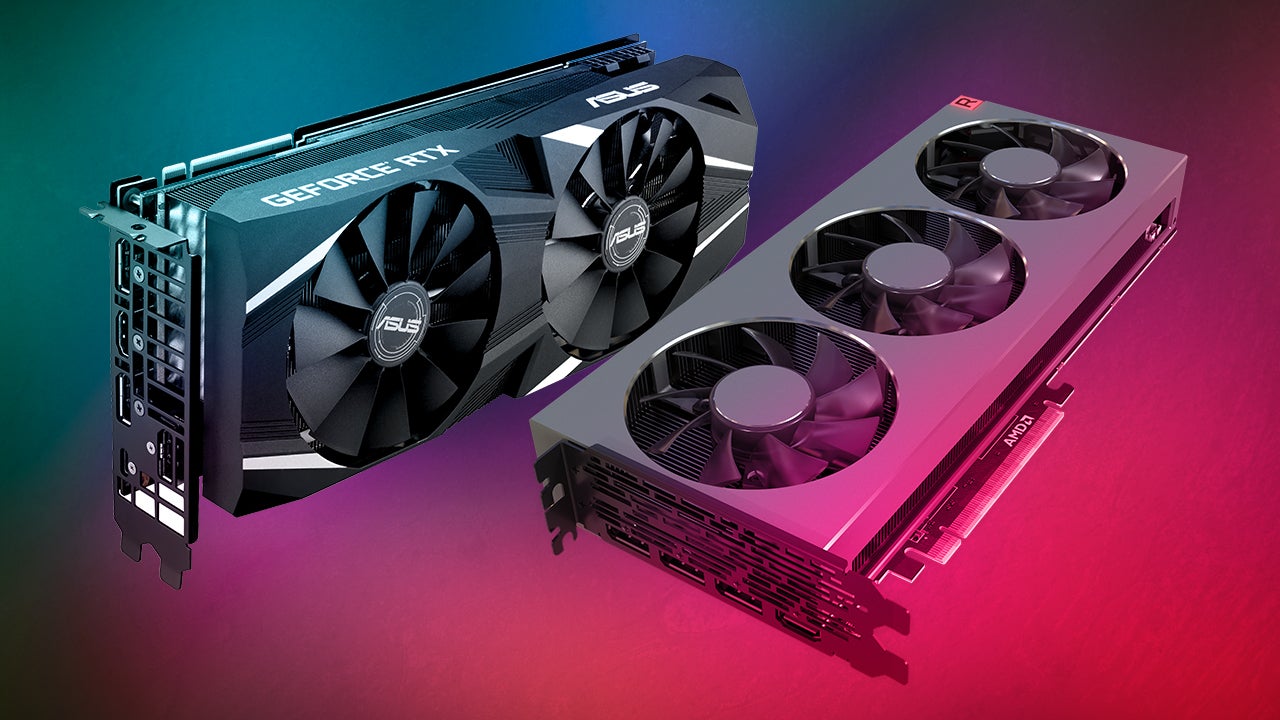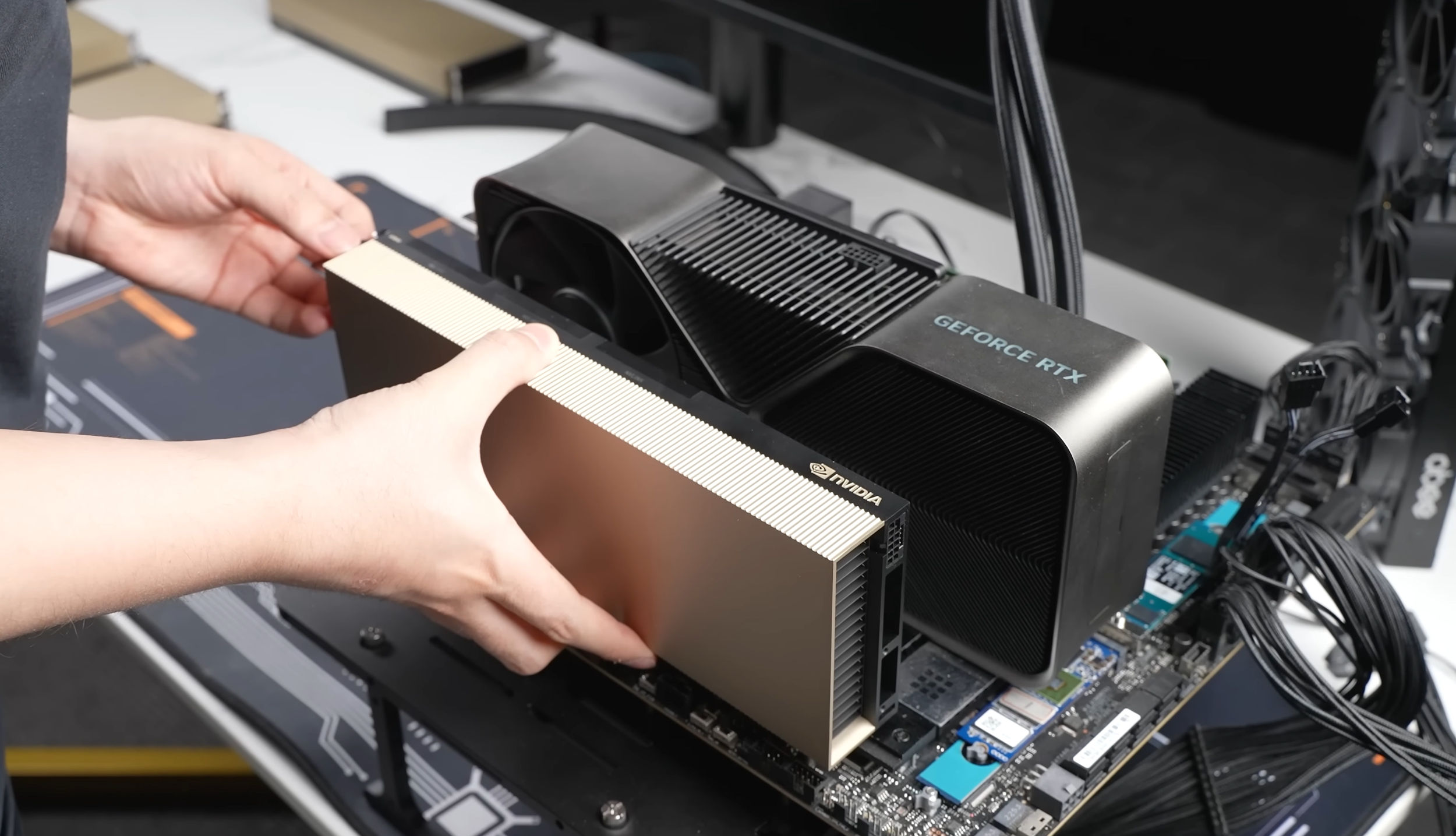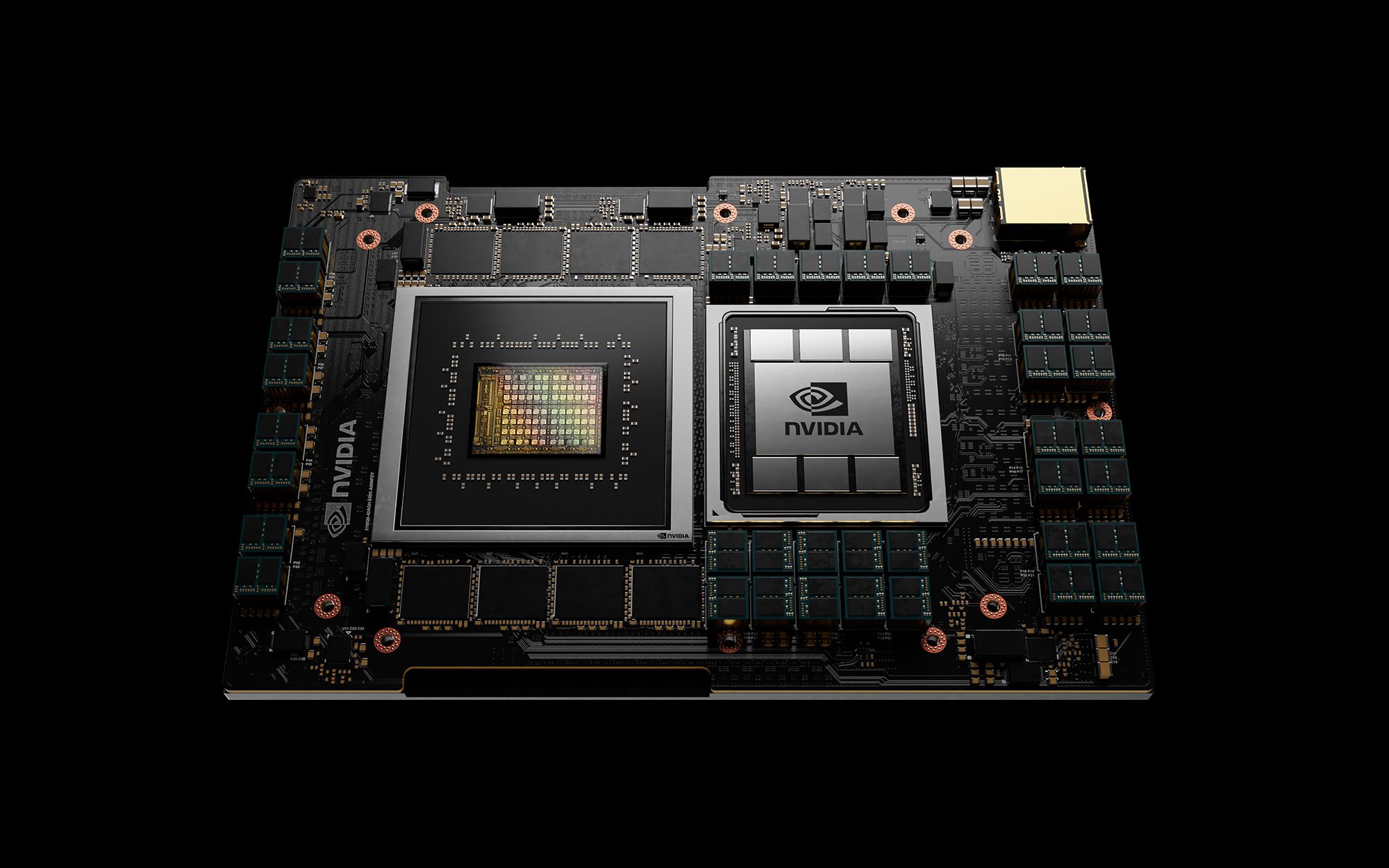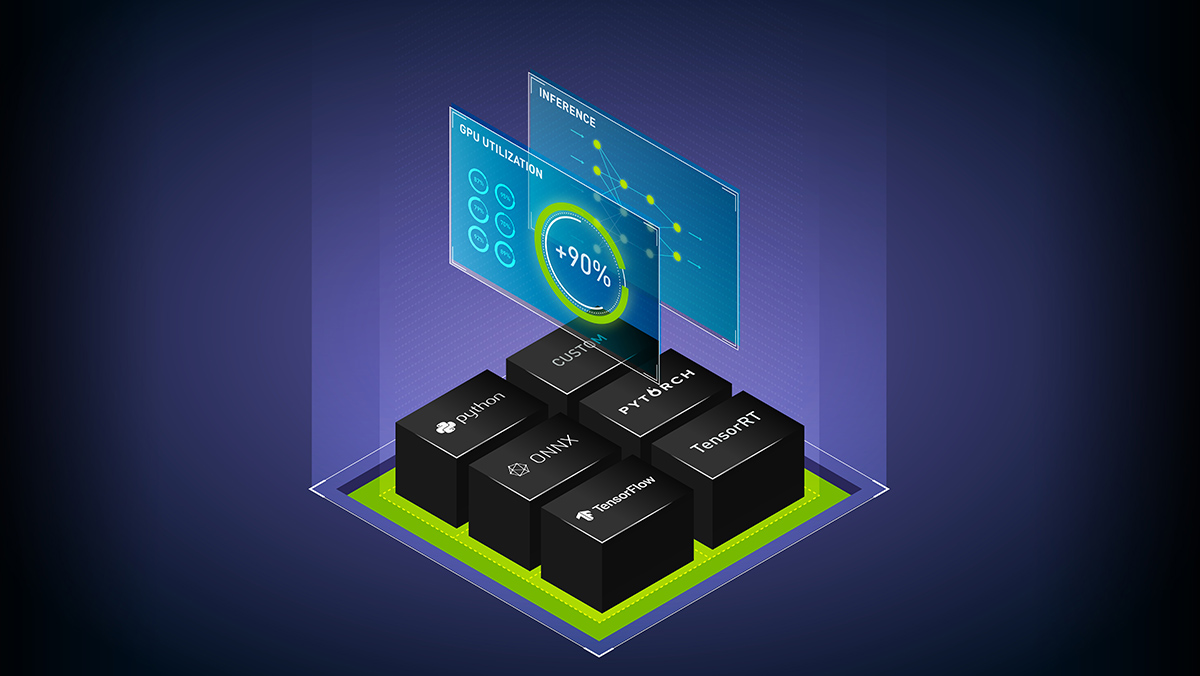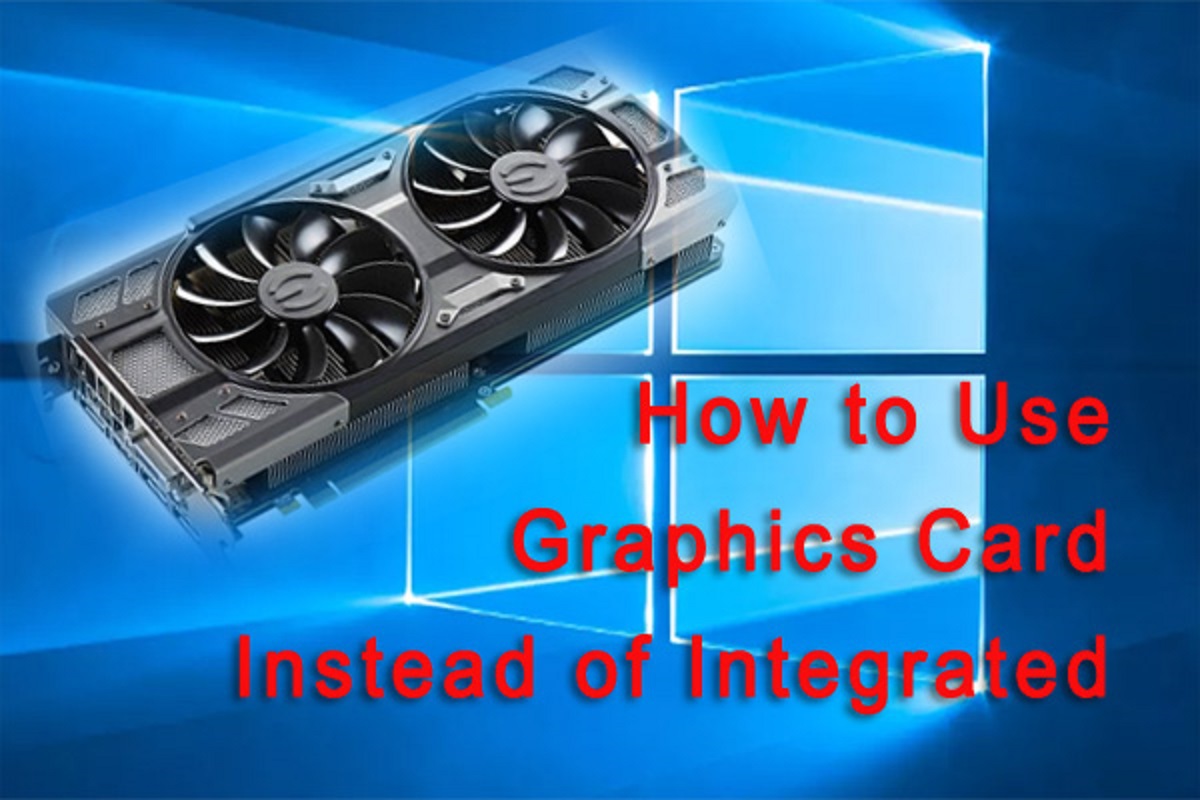What Is Hardware Accelerated GPU Scheduling
Hardware Accelerated GPU Scheduling is a feature introduced by Microsoft in the Windows 10 May 2020 Update. It is designed to improve the performance and efficiency of graphics processing unit (GPU) scheduling on Windows systems. This feature allows the GPU to have more control over its own scheduling, reducing latency and improving overall system responsiveness.
With traditional software GPU scheduling, the central processing unit (CPU) is responsible for managing and scheduling GPU tasks. However, this can introduce unnecessary overhead and latency, especially in highly demanding applications and games.
Hardware Accelerated GPU Scheduling shifts the responsibility of GPU scheduling from the CPU to the GPU itself. By allowing the GPU to manage its own scheduling, it can prioritize tasks more efficiently, resulting in smoother graphics rendering, reduced input lag, and improved overall system performance.
This feature utilizes a Dedicated GPU Memory (VRAM) manager that keeps track of the memory resources required by different GPU tasks. It ensures that tasks are processed in a timely manner and that memory resources are allocated and released efficiently.
In addition to improved performance, Hardware Accelerated GPU Scheduling also brings energy efficiency benefits. By reducing the CPU’s involvement in GPU scheduling, power consumption is optimized, resulting in lower energy usage and extended battery life on laptops and portable devices.
It is important to note that Hardware Accelerated GPU Scheduling is only supported on systems with compatible GPUs and drivers. It requires a GPU that supports the WDDM 2.7 or later driver model.
Enabling Hardware Accelerated GPU Scheduling on your Windows 10 system can be done through the Graphics Settings in the Windows Settings app. However, it is worth mentioning that not all applications and games may benefit from this feature, and there can be compatibility issues in certain scenarios.
Overall, Hardware Accelerated GPU Scheduling is an important advancement in GPU performance and efficiency. By allowing the GPU to manage its own scheduling, it reduces latency, improves responsiveness, and enhances the overall experience of graphics-intensive applications and games on Windows systems.
Introduction
As technology continues to advance, GPUs (Graphics Processing Units) have become a critical component in modern computing systems. From gaming to graphic design, the demand for fast and efficient GPU performance is greater than ever. This has led to the development of Hardware Accelerated GPU Scheduling, a feature that aims to improve GPU scheduling and optimize performance.
Traditionally, GPU scheduling has been handled by the CPU (Central Processing Unit) in software, which can introduce latency and inefficiencies. However, with the introduction of Hardware Accelerated GPU Scheduling, the GPU now has more control over its own scheduling, resulting in improved performance and reduced latency.
With traditional software GPU scheduling, the CPU had to manage and schedule GPU tasks, which created an additional layer of overhead. This overhead could lead to increased latency and reduced overall system performance, especially in graphics-intensive tasks like gaming or rendering. Hardware Accelerated GPU Scheduling aims to address these issues by allowing the GPU to handle its own scheduling.
By shifting the responsibility of GPU scheduling to the GPU itself, Hardware Accelerated GPU Scheduling reduces the need for CPU involvement in the process. This means that the GPU can prioritize tasks more efficiently, resulting in smoother graphics rendering, reduced input lag, and improved system responsiveness. Additionally, this feature optimizes power consumption, leading to lower energy usage and extended battery life on laptops and portable devices.
It is important to note that Hardware Accelerated GPU Scheduling is not supported on all systems. It requires a compatible GPU and driver that supports the WDDM (Windows Display Driver Model) 2.7 or later. Enabling this feature can be done through the Graphics Settings in the Windows Settings app, but it may not provide noticeable benefits for all applications and games.
In this article, we will delve deeper into the concept of Hardware Accelerated GPU Scheduling, exploring how it works, its benefits, supported operating systems and hardware, and its limitations. By the end, you will have a comprehensive understanding of this feature and its implications for GPU performance on Windows systems.
What is GPU Scheduling?
GPU scheduling refers to the process of managing the execution of tasks on the GPU. As the GPU has evolved to handle complex computations and graphics-intensive workloads, the need for efficient scheduling has become essential. GPU scheduling ensures that tasks are processed in the correct order and that the GPU resources are allocated effectively.
In a typical system, the CPU is responsible for managing the scheduling of GPU tasks. The CPU determines which tasks are sent to the GPU, when they are executed, and in what order. This involves coordinating with the GPU driver and allocating memory resources for each task.
However, traditional software GPU scheduling can introduce latency and inefficiencies. The CPU must constantly communicate with the GPU, which can lead to delays and reduce overall system performance. The CPU may also struggle to prioritize GPU tasks effectively, especially in scenarios where multiple processes are competing for GPU resources.
Hardware Accelerated GPU Scheduling aims to address these issues by shifting the responsibility of GPU scheduling to the GPU itself. With this feature, the GPU takes control of managing its own tasks and allocating resources, reducing the need for constant communication with the CPU.
By allowing the GPU to handle its own scheduling, Hardware Accelerated GPU Scheduling improves the efficiency and responsiveness of graphics processing. The GPU can prioritize tasks more effectively, resulting in smoother graphics rendering, reduced input lag, and improved overall system performance.
Furthermore, this feature brings energy efficiency benefits. By reducing the CPU’s involvement in GPU scheduling, power consumption is optimized, leading to lower energy usage and extended battery life, particularly on portable devices.
It is worth noting that GPU scheduling primarily affects graphics-intensive applications and games. These tasks tend to heavily rely on the GPU’s capabilities and can benefit the most from efficient GPU scheduling. Other types of applications that don’t heavily utilize the GPU may not experience significant improvements from Hardware Accelerated GPU Scheduling.
In the next section, we will explore the role of Hardware Accelerated GPU Scheduling and the advantages it brings to Windows systems.
Traditional Software GPU Scheduling
In a traditional software GPU scheduling setup, the CPU is responsible for managing and coordinating tasks that are sent to the GPU. When an application or game sends a request to the GPU for processing, the CPU takes on the role of scheduling those tasks and ensuring that they are executed in the correct order.
This software-based approach requires the CPU to communicate with the GPU driver to allocate memory resources and manage the execution of tasks. The CPU decides when to send tasks to the GPU and coordinates the transfer of data between the CPU and GPU memory.
However, relying on the CPU for GPU scheduling introduces certain limitations. Firstly, there can be a significant amount of overhead and latency involved in the communication between the CPU and GPU. This communication can consume valuable processing time and result in delays in task execution.
Additionally, the CPU can face challenges in effectively prioritizing GPU tasks, especially in scenarios where multiple processes are vying for GPU resources. This can lead to inefficiencies in task scheduling and performance bottlenecks.
Another limitation of traditional software GPU scheduling is the potential impact on overall system responsiveness. Since the CPU is responsible for managing both general computing tasks and GPU scheduling, there can be conflicts and delays in task execution, ultimately affecting the responsiveness of the system.
These challenges become particularly evident in graphics-intensive applications and games that heavily rely on the GPU’s capabilities. The CPU’s involvement in GPU scheduling can limit the potential performance gains that the GPU can provide.
To address these limitations, Microsoft introduced Hardware Accelerated GPU Scheduling with the Windows 10 May 2020 Update. This feature allows the GPU to take on a more active role in managing its own scheduling, reducing latency and improving system responsiveness.
In the next section, we will explore the role of Hardware Accelerated GPU Scheduling and the benefits it brings to Windows systems.
The Role of Hardware Accelerated GPU Scheduling
Hardware Accelerated GPU Scheduling plays a crucial role in optimizing GPU performance and improving system responsiveness. By shifting the responsibility of GPU scheduling from the CPU to the GPU itself, this feature empowers the GPU to manage its own tasks and allocate resources more efficiently.
One of the key roles of Hardware Accelerated GPU Scheduling is to reduce latency. With traditional software GPU scheduling, the CPU has to communicate with the GPU for every task, leading to delays and potential performance bottlenecks. By allowing the GPU to handle its own scheduling, communication overhead is reduced, resulting in lower latency and faster task execution.
Another important role of Hardware Accelerated GPU Scheduling is to improve system responsiveness. As the GPU takes on a more proactive role in scheduling tasks, the CPU is relieved of the burden of managing GPU tasks alongside general computing tasks. This separation results in improved responsiveness, as the CPU can focus on its own tasks without being unnecessarily tied up in GPU scheduling activities.
Furthermore, Hardware Accelerated GPU Scheduling brings efficiency benefits to the system. By allowing the GPU to manage its own scheduling, power consumption is optimized. This is achieved by reducing the CPU’s involvement in GPU scheduling activities, resulting in lower energy usage and increased battery life, especially on laptops and portable devices.
Hardware Accelerated GPU Scheduling also enhances the overall performance of graphics-intensive applications and games. By allowing the GPU to prioritize tasks more effectively, it can deliver smoother graphics rendering, reduced input lag, and an overall improved user experience. This is particularly beneficial in scenarios where the GPU’s capabilities are pushed to their limits.
It is important to note that while Hardware Accelerated GPU Scheduling brings significant benefits, its impact may vary depending on the specific hardware and software configuration of the system. Not all applications and games may experience equally noticeable improvements, and compatibility issues can arise in certain scenarios.
In the next section, we will explore the specific benefits of Hardware Accelerated GPU Scheduling in more detail.
Benefits of Hardware Accelerated GPU Scheduling
Hardware Accelerated GPU Scheduling offers several benefits that enhance GPU performance and improve system responsiveness. By allowing the GPU to handle its own scheduling, this feature brings improvements in latency, efficiency, and overall user experience.
One of the key benefits of Hardware Accelerated GPU Scheduling is reduced latency. With traditional software GPU scheduling, the CPU acts as an intermediary between the GPU and applications or games requesting GPU processing. This can introduce delays in task scheduling and execution. However, with Hardware Accelerated GPU Scheduling, the GPU takes control of its own scheduling, bypassing the need for CPU involvement. As a result, tasks are executed more quickly, reducing latency and improving overall system responsiveness.
Efficiency is another advantage of Hardware Accelerated GPU Scheduling. By allowing the GPU to manage its own scheduling, the CPU’s involvement is minimized. This results in reduced CPU usage and frees up computing resources for other tasks, leading to improved overall system efficiency. The GPU can prioritize tasks more effectively and allocate resources efficiently, ensuring optimum performance and power consumption.
In addition to improved latency and efficiency, Hardware Accelerated GPU Scheduling delivers enhanced graphics performance. By giving the GPU more control over its own scheduling, it can prioritize graphics-intensive tasks with greater efficiency. This results in smoother graphics rendering, reduced input lag, and a more immersive experience for users. Applications and games that heavily rely on the GPU’s capabilities benefit the most from this feature, providing a noticeable improvement in performance and visual quality.
Energy efficiency is a significant advantage of Hardware Accelerated GPU Scheduling, particularly for laptops and portable devices. By reducing the CPU’s involvement in GPU scheduling, power consumption is optimized. The GPU can handle its own scheduling, preventing unnecessary CPU-GPU communication and reducing overall energy usage. This leads to extended battery life and more efficient use of resources in mobile computing scenarios.
It is worth mentioning that while Hardware Accelerated GPU Scheduling brings significant benefits, its impact may vary depending on the specific hardware and software configuration. Certain applications and games may experience more noticeable improvements compared to others, and there is a dependency on compatible GPUs and drivers that support this feature.
In the following sections, we will dive deeper into how Hardware Accelerated GPU Scheduling works, the supported operating systems and hardware, and how to enable or disable this feature.
How Does Hardware Accelerated GPU Scheduling Work?
Hardware Accelerated GPU Scheduling operates by shifting the responsibility of GPU task scheduling from the CPU to the GPU itself. This feature allows the GPU to manage its own tasks and allocate resources more efficiently, resulting in improved performance and reduced latency.
At the core of Hardware Accelerated GPU Scheduling is a Dedicated GPU Memory (VRAM) manager. This manager keeps track of the memory resources required by different GPU tasks and ensures that they are allocated and released efficiently. By optimizing memory management, the GPU can process tasks more effectively and avoid potential bottlenecks.
In traditional software GPU scheduling, the CPU typically handles memory management for GPU tasks. With Hardware Accelerated GPU Scheduling, the GPU takes control and directly manages memory resources, reducing the need for CPU involvement and communication.
Another key element of Hardware Accelerated GPU Scheduling is the ability of the GPU to prioritize tasks. The GPU has a better understanding of its own capabilities and resource requirements, enabling it to schedule tasks more effectively. It can allocate resources based on task priority, ensuring that critical and time-sensitive tasks are processed in a timely manner.
With this feature enabled, the CPU’s role in GPU scheduling is minimized, allowing it to focus on other computing tasks. This separation of responsibilities improves overall system responsiveness and performance.
It is important to note that Hardware Accelerated GPU Scheduling requires compatible hardware and drivers. The GPU must support the WDDM (Windows Display Driver Model) 2.7 or later driver model. Additionally, the operating system must also support this feature. As of the Windows 10 May 2020 Update, Hardware Accelerated GPU Scheduling is supported on Windows systems.
Enabling or disabling Hardware Accelerated GPU Scheduling can be done through the Graphics Settings in the Windows Settings app. However, it is worth mentioning that not all applications and games may benefit equally from this feature. Some applications may not see noticeable improvements or may even experience compatibility issues. Therefore, it is recommended to test the feature’s impact on specific applications or games before making a final decision.
In the following section, we will discuss the supported operating systems and hardware for Hardware Accelerated GPU Scheduling.
Supported Operating Systems and Hardware
Hardware Accelerated GPU Scheduling is a feature introduced by Microsoft in the Windows 10 May 2020 Update. Therefore, it is supported on Windows systems that have this update or a later version installed.
However, it is worth noting that not all hardware configurations are compatible with Hardware Accelerated GPU Scheduling. This feature depends on the driver model and capabilities of the GPU. In order to utilize this feature, the GPU must support the WDDM (Windows Display Driver Model) 2.7 or later driver model.
Most modern GPUs from major manufacturers, such as NVIDIA and AMD, are capable of supporting Hardware Accelerated GPU Scheduling. However, it is recommended to check with the GPU manufacturer or refer to the device specifications to confirm support for this feature.
Additionally, it is important to ensure that the GPU driver is up to date in order to take advantage of Hardware Accelerated GPU Scheduling. Driver updates often provide optimizations and bug fixes that can enhance the performance and stability of the GPU, making it crucial to keep the driver software up to date.
Operating systems other than Windows 10 may not have official support for Hardware Accelerated GPU Scheduling. While there may be other GPU scheduling optimization options available on different operating systems, they may not provide the same level of control and performance benefits as Hardware Accelerated GPU Scheduling on Windows 10.
Before enabling Hardware Accelerated GPU Scheduling, it is recommended to verify that the system meets the minimum requirements and that the GPU driver is compatible. This will ensure that the feature can be utilized effectively and without compatibility issues.
In the next section, we will explore how to enable or disable Hardware Accelerated GPU Scheduling on a Windows system.
Enabling and Disabling Hardware Accelerated GPU Scheduling
To enable or disable Hardware Accelerated GPU Scheduling on a Windows system, follow these steps:
- Click the “Start” button and open the Windows Settings app.
- Go to the “System” category.
- Select “Display” from the left-hand menu.
- Scroll down to find and click on “Graphics settings.”
- Under the “Hardware-accelerated GPU scheduling” section, toggle the switch to enable or disable this feature.
- Once enabled, the GPU will begin handling its own scheduling tasks.
It is important to note that enabling or disabling Hardware Accelerated GPU Scheduling may vary in its impact depending on the specific applications and games being used. While this feature has the potential to improve performance and responsiveness, some applications may not show noticeable benefits or may even encounter compatibility issues.
Therefore, it is recommended to test the impact of Hardware Accelerated GPU Scheduling on specific applications or games before making a final decision. Users can monitor the performance and stability of their system after enabling or disabling this feature to determine the best configuration for their needs.
It is worth mentioning that not all operating systems support Hardware Accelerated GPU Scheduling. This feature is specific to Windows 10 and later versions. Other operating systems may have alternative GPU scheduling optimization options, but they may not provide the same level of control and performance benefits.
In the next section, we will discuss some limitations of Hardware Accelerated GPU Scheduling that users should be aware of.
Limitations of Hardware Accelerated GPU Scheduling
While Hardware Accelerated GPU Scheduling brings significant benefits to GPU performance and system responsiveness, there are a few limitations to be aware of when utilizing this feature.
One limitation is the requirement for compatible hardware and software. Hardware Accelerated GPU Scheduling relies on GPUs that support the WDDM (Windows Display Driver Model) 2.7 or later driver model. Not all GPUs may meet this requirement, so it is important to check the GPU specifications and driver compatibility before attempting to enable this feature.
Another limitation is that not all applications and games may benefit equally from Hardware Accelerated GPU Scheduling. Some applications may not show noticeable improvements in performance, while others may even encounter compatibility issues. It is recommended to test the impact of this feature on specific applications and games before deciding whether to enable or disable it permanently.
Compatibility issues can arise when using Hardware Accelerated GPU Scheduling with certain software configurations. Some applications may rely on specific GPU scheduling techniques or features that are not supported when this feature is enabled. In these cases, it may be necessary to disable Hardware Accelerated GPU Scheduling to ensure proper functionality.
Additionally, certain older GPUs or legacy hardware configurations may not support Hardware Accelerated GPU Scheduling. It is important to verify the compatibility of the GPU and its drivers before attempting to enable this feature.
Furthermore, it is worth noting that while Hardware Accelerated GPU Scheduling aims to improve performance and efficiency, the actual impact may vary depending on the specific system configuration and workload. Factors such as the complexity of the graphics tasks, the available GPU resources, and other system components can influence the effectiveness of this feature.
Users should also be aware that enabling Hardware Accelerated GPU Scheduling may result in different behavior or performance characteristics compared to traditional software GPU scheduling. Monitoring system performance and stability after enabling this feature is recommended to ensure that any compatibility issues or unexpected behaviors can be addressed promptly.
By understanding these limitations, users can make informed decisions about whether to enable or disable Hardware Accelerated GPU Scheduling based on their specific hardware, software, and application requirements.
In the next section, we will conclude this article by summarizing the key points discussed.
Conclusion
Hardware Accelerated GPU Scheduling is a feature that brings significant benefits to GPU performance and system responsiveness on Windows systems. By allowing the GPU to manage its own scheduling, this feature reduces latency, improves efficiency, and enhances the overall user experience.
By shifting the responsibility of GPU scheduling from the CPU to the GPU itself, Hardware Accelerated GPU Scheduling reduces the need for constant communication between the CPU and GPU, resulting in faster task execution and reduced latency. The GPU can prioritize tasks more effectively, leading to smoother graphics rendering, reduced input lag, and improved system performance.
In addition to performance improvements, Hardware Accelerated GPU Scheduling optimizes power consumption by reducing the CPU’s involvement in GPU scheduling. This results in lower energy usage and extended battery life, especially on laptops and portable devices.
However, it is important to be aware of the limitations of this feature. Not all hardware configurations may be compatible with Hardware Accelerated GPU Scheduling, and not all applications and games may experience significant improvements in performance. Compatibility issues and the need to test specific applications before making a final decision are important considerations.
To enable or disable Hardware Accelerated GPU Scheduling, users can navigate to the Graphics Settings in the Windows Settings app. However, it is recommended to monitor system performance and stability after enabling or disabling this feature to ensure optimal results.
In conclusion, Hardware Accelerated GPU Scheduling is a powerful feature that enhances GPU performance and system responsiveness on Windows systems. By empowering the GPU to manage its own scheduling, this feature improves latency, power efficiency, and overall user experience. While limitations exist, understanding these limitations and testing for compatibility will allow users to make informed decisions about enabling or disabling Hardware Accelerated GPU Scheduling based on their specific needs and system configurations.







